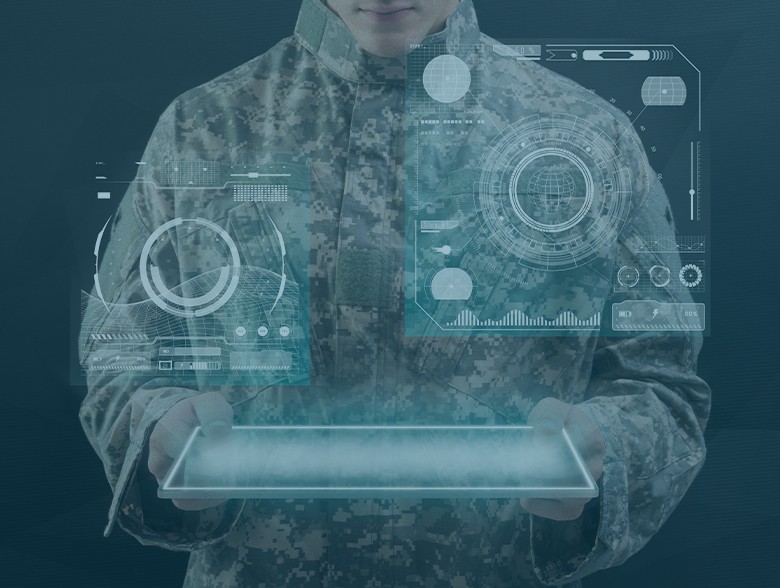Automation technologies are gaining momentum as organizations across various industries recognize the value of automating processes to improve efficiency and reduce costs. A recent TEI study conducted by Forrester highlights the significant benefits that organizations can derive from implementing automation technologies, including operational efficiency savings and infrastructure appliance savings.
While automation offers numerous advantages, it also raises concerns about trust, particularly in sensitive sectors such as the military. Trust is of utmost importance in the military, as it directly impacts the security of sensitive information and the efficiency of operations. However, the trust issues in the military are not necessarily directed towards the automation technologies themselves. Instead, they stem from trust deficits within what is known as “layer 8,” a hypothetical layer used to analyze network problems and issues that fall outside the traditional seven-layer OSI model. In essence, layer 8 refers to the human element in network operations.
Within the military context, the lack of trust exhibited within layer 8 poses obstacles to automation and has a negative impact on mission assurance. Although the commercial sector may prioritize profits and have different objectives from the Department of Defense (DoD), the military can still benefit greatly from implementing network automation to enhance mission assurance.
The DoD defines mission assurance as a process to protect and ensure the continuous functioning and resilience of critical assets and capabilities, including personnel, equipment, networks, and information systems. In today’s rapidly changing and complex cyber environment, network automation plays a crucial role in achieving mission assurance objectives.
Automation, as defined by Merriam-Webster, refers to the automatic control of a system using mechanical or electronic devices to replace human labor. Over time, automation has gained trust in various processes within aviation, such as the trusted autopilot in a KC-135 during refueling operations. However, not all processes can be fully automated, and there are instances where manual intervention is necessary, highlighting the need for a balanced integration of human behavior and technology.
Joint All-Domain Command and Control (JADC2) is a networked military system that integrates and synchronizes operations across all domains of warfare. This integration involves various platforms, including sensors, weapons, and communication systems, to provide a comprehensive picture of the battlespace and enable faster decision-making. However, achieving seamless integration across multiple platforms presents challenges, as different systems may use different communication protocols, data formats, and security measures.
The lack of trust within layer 8 of the DoD hampers the integration of human behavior and technology in military networks, thus impacting mission assurance and JADC2. Overcoming trust issues requires effective leadership at all levels and trust-building among organization commanders. Transparency, accountability, and robust processes for monitoring and verifying data are crucial to ensuring the accuracy and security of automated processes.
Orchestration, a key component of automation, requires the use of tools such as application program interfaces (APIs) to enable communication and automation of multiple processes simultaneously. While the commercial sector has already embraced orchestration to streamline IT service management, the DoD lags behind in implementation at the layer 8 level.
Improving military networks necessitates sufficient funding and the recognition of networks as a vital tool for the DoD. Trust is also paramount in this process, as fear of losing financial resources can hinder necessary changes. Leaders should prioritize what is best for their service rather than their own organization and work towards adequate funding allocation based on trust and the overall mission.
Automation and orchestration technologies are essential in streamlining business activities, managing systems, and achieving DevOps goals. Implementing these technologies effectively requires addressing layer 8 issues, including process transparency, accountability, funding, documentation, audits, education, and trust-building. By focusing on the human factor and the interaction between people, technology, processes, and policies, the military can harness the full benefits of automation and orchestration for mission assurance and JADC2, ultimately running its networks at the speed of automation.
About the Authors:
Marc Packler, President of CISO Advisory at Silent Quadrant, is a cybersecurity expert with extensive U.S. Air Force experience. He specializes in digital security, risk management, and strategic operations. Tony Thomas, President & Chairman of Tony Thomas & Associates LLC, has over 34 years of U.S. Air Force experience and leverages his expertise to transform digital governance, compliance, security, and process improvement in both industry and the DoD.


